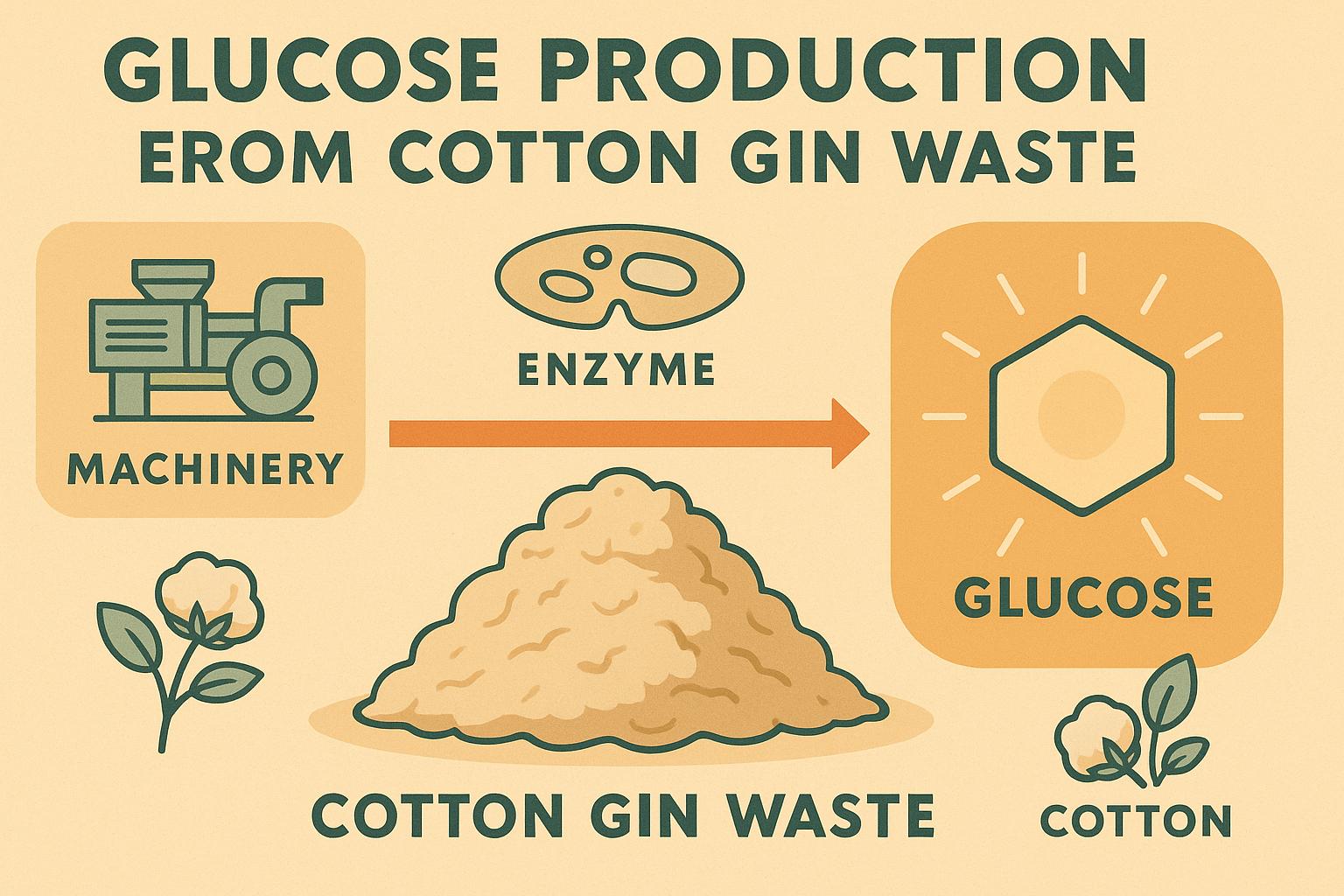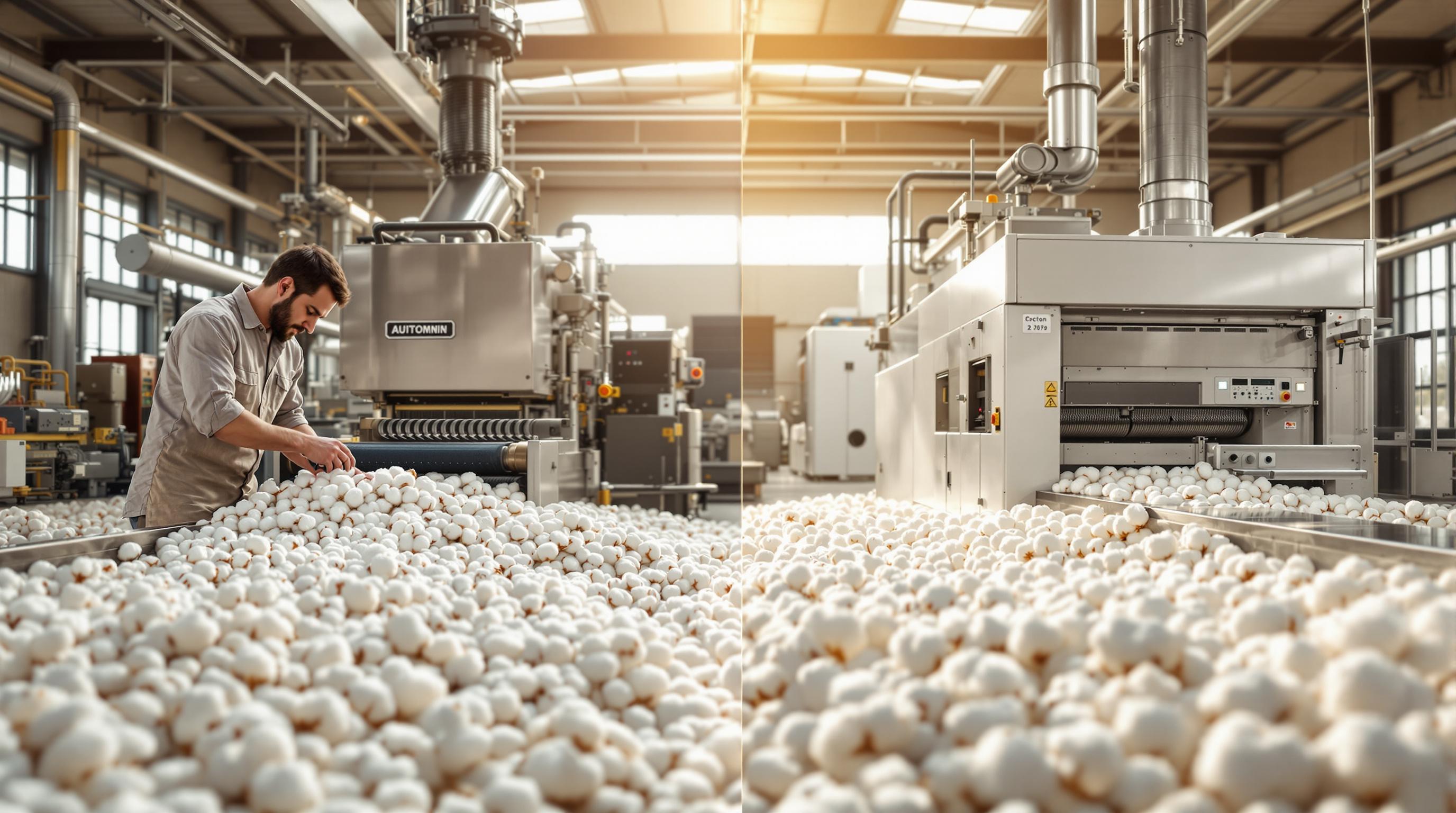Cotton has been a vital part of Louisiana's economy and culture since the early 1700s. Here's a quick overview:
- 1700s Beginnings: Cotton started as a household crop, with Acadian settlers later turning it into a small-scale industry.
- Cotton Gin Revolution: Eli Whitney's 1793 invention made cotton profitable, especially in northeast Louisiana, cementing its role as a major cash crop.
- Pre-Civil War Boom: By 1860, Louisiana produced one-sixth of the U.S.'s cotton, relying heavily on enslaved labor.
- Post-War Changes: Sharecropping, tenant farming, and mechanization reshaped the industry after the Civil War.
- Modern Era: Cotton acreage has declined, but it remains a key crop in Louisiana's $13 billion agribusiness, supported by advanced farming techniques and niche markets like brown cotton.
Cotton’s story in Louisiana is one of transformation, from small farms to large plantations, and now to modern, efficient farming practices. Its legacy continues to shape the state's agricultural identity.
Cotton's Early Years in Louisiana
First Cotton Farms
Cotton farming in Louisiana began in the early 1700s, primarily for household use. Families grew small patches of cotton to spin and weave their own textiles at home. At this stage, cotton was more about meeting basic needs than making money.
Things changed in 1765 when Acadian settlers arrived in south Louisiana. These settlers brought with them skills in textile production. Acadian women, in particular, adjusted their wool-weaving techniques to work with cotton, creating a small-scale cottage industry.
"Everyone would bring their cards and extra chairs would be brought in from the neighbors close by. We would card all afternoon, with a break for lemonade and cookies. Then, Mama would spin in the evening." – Gladys Clark
This domestic approach to cotton production set the stage for the crop's transformation into a key economic driver.
Rise as a Major Crop
The cotton gin, invented in 1793, changed everything. It turned cotton into a highly profitable crop in Louisiana by making processing faster and easier. This innovation fueled rapid growth, especially in northeast Louisiana, an area that became closely tied to cotton farming for over a century.
By 1860, the U.S. was responsible for producing 75% of the world's cotton, and Louisiana played a major part in that success.
The Louisiana Agricultural Experiment Station became an important ally for cotton farmers. It conducted research to boost yields, cut production costs, and find ways to combat pests and diseases.
These advancements cemented cotton's role as a cornerstone of Louisiana's agricultural economy.
Cotton Gin Development
Eli Whitney's Cotton Gin Effects
Eli Whitney's cotton gin, introduced in 1793, revolutionized Louisiana's cotton industry. Before its invention, processing cotton was extremely labor-intensive, which limited its profitability. The cotton gin simplified the process of separating cotton fibers from seeds, transforming cotton from a crop primarily used for household purposes into a major cash crop. This shift was especially impactful in northeast Louisiana, where cotton dominated agriculture for more than a century.
Louisiana's Cotton Gin Growth
The adoption of cotton gin technology spread quickly throughout Louisiana, significantly increasing production. This development solidified northeast Louisiana's status as a leading cotton-producing region for over 100 years.
Pre-Civil War Cotton Industry
Plantation Growth
In the years leading up to the Civil War, Louisiana's cotton industry grew at an extraordinary pace. By 1860, the state was responsible for producing about one-sixth of the nation's cotton. The typical cotton plantation in Louisiana was valued at around $100,000, generating an annual return of 7%. This level of profitability made Louisiana the second-richest state in the U.S. by per capita income. This boom, however, relied heavily on a growing demand for labor.
Slavery in Cotton Production
Louisiana's cotton industry thrived on the exploitation of enslaved labor. Between 1795 and 1860, the enslaved population in the state skyrocketed, increasing from fewer than 20,000 to more than 331,000.
"During the antebellum period, Louisiana relied on the forced labor of enslaved people to work sugar and cotton plantations." - John Bardes
On average, enslaved workers harvested 150 pounds of cotton daily, with some managing as much as 400 pounds. The domestic slave trade played a critical role in sustaining this labor force, bringing over 124,000 enslaved Africans and African Americans to Louisiana. These individuals worked on both cotton and sugar plantations. As historian John Bardes observed:
"Louisiana's economy, politics, and social structure were defined by sugar and cotton, and the enslaved labor used to produce them"
Civil War and Recovery
Civil War Effects
The Civil War caused major disruptions to Louisiana's cotton industry. Military campaigns and the Union blockade severely impacted cotton exports, which were a key part of the state's economy. Production plummeted, and the war left much of the industry’s infrastructure in ruins. Plantation owners faced the challenge of rebuilding while also adjusting to a completely transformed economic landscape. These changes marked the beginning of a new era in labor practices.
Post-War Labor Changes
In the aftermath of the war, with the economy in shambles, plantation owners turned to sharecropping and tenant farming as new labor systems. The Louisiana Agricultural Experiment Station began studying ways to increase efficiency and cut labor costs. John Barnett highlighted one approach:
"Conservation tillage minimized the use of equipment, made farming more efficient while improving organic matter and the capacity to control erosion"
Advances in farming technology also helped address labor shortages. Larry Rogers remarked on one such development:
"This technology was truly a revolutionary development in the history of pest control in agronomic crops"
These technological advances, along with the shift in labor practices, helped Louisiana's cotton industry recover and diversify, laying the groundwork for its modernization.
sbb-itb-0e617ca
1900s Industry Changes
Machine Farming Growth
After labor systems shifted post-war, mechanization brought major changes to cotton farming in Louisiana. By the late 1970s, new machinery allowed a single farmer to manage over 185 acres. Today, many farmers handle 400–500 acres with only minimal seasonal help. Tools like mechanical cotton pickers and improved pesticides drastically reduced the need for manual labor during harvesting and fieldwork. In 1987, Robert Hutchinson conducted field studies at the Macon Ridge Research Station to examine how tillage impacted production and soil erosion.
Market and Weather Issues
While mechanization had improved efficiency, the Great Depression hit the industry hard. Wages dropped to just 75 cents per day, and the number of cotton gins plummeted from over 100 to only 29. In 2002, a new technology emerged in Tensas Parish with the first aerially-applied prescription treatment. This method, led by LSU AgCenter entomologists Rogers Leonard and Ralph Bagwell, changed pest management by targeting only affected areas. Larry Rogers, former director of the Louisiana Agricultural Experiment Station, highlighted its importance:
"This technology was truly a revolutionary development in the history of pest control in agronomic crops."
Economic factors also played a major role in reshaping the industry. State cotton specialist David Kerns explained:
"It's simple economics. Farmers want to make more money, just like anybody else would like to make more money. Currently, they can make more money growing corn and soybeans than they can cotton."
The introduction of transgenic technologies like Bt cotton reduced the reliance on synthetic pesticides for caterpillar pests. However, despite these advancements, cotton farming in Louisiana has decreased significantly. Cotton acreage has now dropped below 250,000 acres as many farmers have shifted to other crops.
Cotton in Modern Louisiana
Current Economic Impact
Cotton continues to play a major role in Louisiana's $13 billion agribusiness sector. Advances like precision agriculture and targeted pest management, led by the Louisiana Agricultural Experiment Station, have significantly improved productivity. In 2017, cotton planting reached 200,000 acres - a 43% jump from the previous year - while soybeans dominated with about 1.3 million acres.
"Without the direct subsidies of the past, producers are farming markets rather than a specific crop."
Programs like the Quality Jobs initiative, offering up to a 6% payroll rebate over ten years, help keep Louisiana's agriculture competitive. These developments have reshaped the state's farming traditions and economic strategies.
Historical Memory
Cotton holds more than just economic value in Louisiana; it carries deep cultural significance. The eradication of the boll weevil in 2011 was a game-changer, reducing the need for insecticides and revolutionizing cotton farming. The LSU AgCenter has played a key role in this transformation, providing farmers with crucial research and guidance. As cotton specialist John Kruse explains:
"This is the sole source of unbiased data that producers have. When it comes to which varieties to grow, this information is vital to their decision-making process."
Conservation tillage has further improved farming practices, enhancing efficiency and soil health. Northeast Region Director John Barnett highlights its impact:
"Conservation tillage minimized the use of equipment, made farming more efficient while improving organic matter and the capacity to control erosion. It's been economically and environmentally beneficial to Louisiana agriculture."
This rich history fuels innovation in niche markets. For instance, while traditional white cotton sells for around 60 cents per pound, brown cotton can fetch prices as high as $20 per pound.
Cotton Gin on the Shreveport Riverfront
Conclusion
Cotton has been a cornerstone of Louisiana's agricultural history for centuries, evolving from small-scale textile production in the early 1700s into a key crop that defines the state's farming identity. Over time, the industry has adjusted to shifts in technology and market demands, maintaining its relevance.
Louisiana's cotton industry combines modern advancements with deep cultural roots. For example, Acadian brown cotton, known as coton jaune, holds cultural significance and commands a premium price - $20 per pound compared to white cotton's 60 cents. This blend of heritage and progress continues to shape the industry.
"Brown cotton has been in Louisiana over 200 years. I am a grower, not a weaver or a spinner, but I would like to revive interest in brown cotton. I believe it was the first cotton grown in Louisiana before white cotton." - Jerry Hale
Modern farming practices reflect the industry's ongoing evolution. Techniques like conservation tillage and integrated pest management help farmers increase yields while protecting natural resources. These advancements ensure cotton remains a key part of Louisiana's agricultural landscape.
As Northeast Region Director John Barnett puts it:
"I don't see the return to king cotton days we had for many years, but Louisiana farmers will remain substantial producers of cotton."
While acreage has decreased over the years, cotton still holds a special place in Louisiana's farming tradition, symbolizing a balance between progress and deeply rooted heritage.


